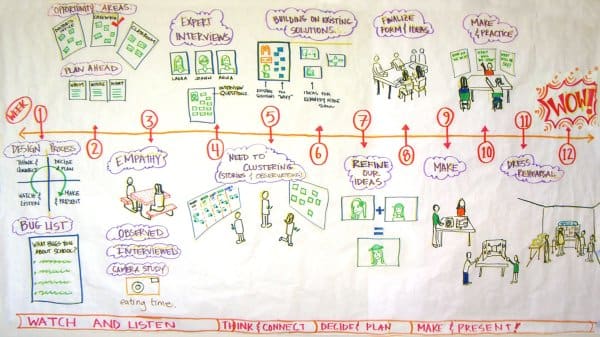More and more businesses are recognizing that creativity is an important competitive advantage. In a 2010 IBM poll of 1,500 CEOs creativity was named as “the most important leadership quality over the next five years.” However, in another recent study of The Torrance Tests of Creative Thinking, Professor Kyung Hee Kim of the College of William & Mary found that “creativity scores had been steadily rising, just like IQ scores, until 1990. Since then, creativity scores have consistently inched downward.” She analyzed 300,000 Torrance scores of children and adults. The population most effected by the decrease is younger children, kindergarten to sixth grade; which Kim says is the “most serious” decline.
Although many things have been cited as the cause of the “Creativity Crisis” from the increase in TV watching to the structure of our current education system, what Kim and others have zeroed in on as a solution is the need to expose children to creative problem-solving. Kim found that "the creative problem-solving program has the highest success in increasing children's creativity." In President Obama’s State of the Union he said that “this is our Sputnik moment” and has since met with leaders in Silicon Valley to understand what it will take to support the innovation needed to get America’s economy back on track. At the root of innovation is creativity, which is the vehicle that allows us to see where and how something can be improved.
So with all of these studies, polls, and presidential calls for action, what can we do to address the creativity crisis that’s at the root of innovation? For the rest of 2011, I would like to bring you along as I start to answer this question and identify some potential models that are addressing the need to cultivate creativity. Before I lead you on the journey, I thought I would share with you one my own personal experiences in trying to solve the “Creativity Crisis.”
After spending years working with companies on innovation, I found myself wondering more and more what would happen if we started earlier. What would happen if creativity was cultivated from day one? What better way to answer this question than immersing myself in the thick of it – Middle School. While working in design strategy, I joined Citizen Schools, a national organization that partners with middle schools across the country to provide extended day learning opportunities. The thing that attracted me the most to Citizen Schools was its commitment to establishing communities of learning through connecting parents, teachers and students to the community by grounding learning in real world experiences.
Along with two friends, I became a Citizen Teacher in their Apprenticeship program and created a twelve-week curriculum, “Design It!,” based on design-driven creative problem solving. Design is an ideal way to bring together these students’ energy, enthusiasm and desire to leave a mark on the world, primarily because it is an inclusive process that can channel their ideas. Citizen Schools’ approach to bringing in the community to be partners in learning, gave me an opportunity to not only expose kids to design thinking, but also to remind them that learning can be fun and a vehicle to impact the world around them. In essence this is the power of creativity and what creative problem-solving can do for not only young people, but also the world.
We centered the apprenticeship on solving a problem of the student’s choosing – changing their lunch experience. Rallying around a school issue, brought kids together that would normally not interact. What a change from the beginning of the class when the students self-divided themselves by grade, gender and English proficiency! Central to the design process is empathy – empathy for those you are designing for and for your teammates. The students evolved into this new mindset because of the balance of instruction and creativity we provided in our interactive exercises.
These activities had a mix of auditory, visual and kinesthetic components in order to insure that every child could participate in something he or she felt comfortable in while learning some new.
At the end of the program our students not only mastered design skills, they also gained empathy for each other and the people who operate their school. As a result of the approach, we had universal participation in a class where 95% of our students were English learners. Students at the beginning of the program, who could barely make eye contact, were now explaining their project proudly to friends, family members and teachers. The most rewarding part of this experience has been seeing our students look at learning in a new way. Some went on to math and design enrichment camps over the summer, while others have decided to recommit to their classes for the following year.
Needless to say I left the experience with more questions than answers, but what I can say is that we must create environments where convergent and divergent thinking can thrive and children and youth feel their contributions matter. Working with Citizen Schools increased my commitment to creativity and put me on a journey to want to learn more. I hope you will come and join me throughout 2011 as I discover what organizations, professors, parents and young people are doing to foster creativity.

